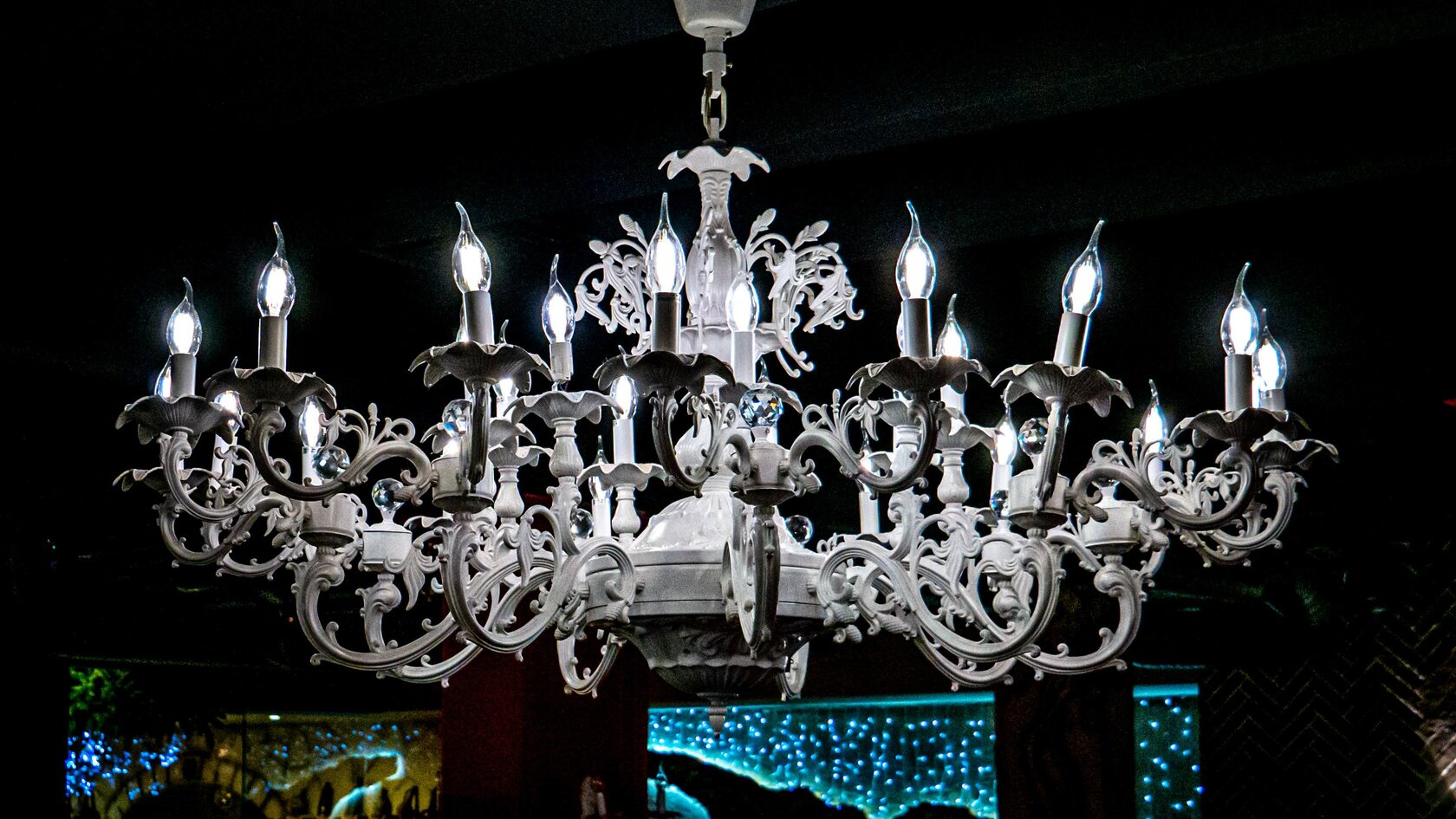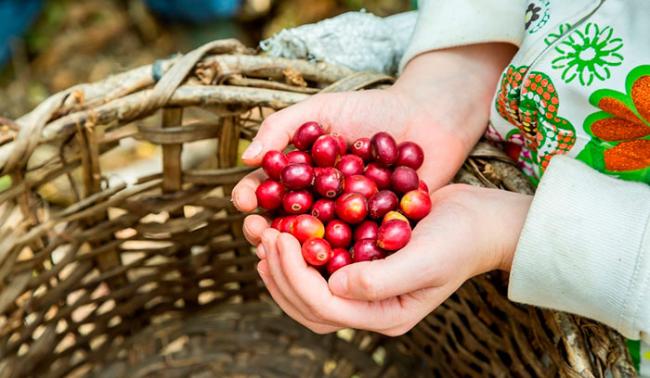Кофетоник
Базовый рецепт холодного кофе, который использую каждое лето. Готовить его легко, ингредиенты простейшие, сборка коктейля элементарная. Я осознанно не указываю конкретное количество кофе и тоника в рецепте. Это зависит от размера стакана и ваших вкусовых предпочтений. Ориентировочные пропорции — ⅓ часть кофе и ⅔ тоника.
Понадобится
- Кофе, заваренный любимым способом (например, в чашке).
- Классический тоник без добавок, обязательно охлаждённый.
- Свежевыжатый сок любого цитруса (лимон, апельсин, лайм).
- Лёд.
Приготовление
- Положить в высокий стакан 2–3 кубика льда.
- Добавить сок цитруса.
- Налить ⅔ стакана тоника.
- Медленно влить ⅓ кофе (пропорции кофе и тоника можно регулировать по вкусу).
- Украсить долькой лимона, лайма или апельсина.
- Пить с удовольствием.
Больше полезных советов от экспертов
Автор фото: Ольга Храмова
History of speciality coffee
In terms of coffee history, speciality coffee is an incredibly young concept. The term can be traced back to 1973 when Norwegian coffee expert (and legend), Erna Knutsen, coined the phrase herself. Erna worked with small trade coffee suppliers, a practice uncommon at the time to promote single origin coffee. She was revolutionary within the coffee industry and changed the attitudes of those within it too. In fact, without Erna, we may not be writing this article, so all credit goes to her and her pioneering work!
In recent years, however, speciality coffee has had a few revivals. This craze really kicked off in the early 2000s and again within the last 8 years. There was a real drive to look at coffee in the way of ‘quality over quantity’. Coffee aficionados wanted to move away from coffee just being a stimulant, used to get commuters through the morning rush. Instead, coffee was going to be made into a delicious product, bursting with flavour and sourced responsibly.
Upon the merger of the European and American Speciality Coffee Association, this gourmet coffee gained a boost in the conscious of coffee lovers. These days, you’ll be hard-pressed not to find a coffee roaster in your city that sells a speciality coffee. If you love coffee, then get yourself a bag of the stuff and never look back!
Различия между спешелти и коммерческим кофе
Кофе в широком смысле можно определить как специальный или коммерческий. С точки зрения потребителя, самая непосредственная разница между коммерческим и специальным кофе заключается в упаковке: коммерческий кофе поставляется в маленьких растворимых бутылочках или уже перемолотый и упакованный в жестяную банку или кирпич с пластиковым покрытием. Спешиалти кофе хранится или доставляется целыми зернами, в мешках или навалом, и перед употреблением его необходимо смолоть.
Коммерческий кофе обычно обжаривают и упаковывают на крупных заводах под товарными знаками, рекламируемыми на национальном уровне. Специальность обычно обжаривается в небольших магазинах или на фабриках с использованием традиционных методов и технологий. Обычно его продают там, где он был обжарен.
Спешиэлти кофе предлагает гораздо больше возможностей, чем коммерческий кофе. Кофе можно приобрести по месту происхождения зерна (Кения, Колумбия), по обжарке (французская обжарка, итальянская обжарка) или по смеси, рассчитанной на время суток, цену или вкус. Ритейлеры предлагают очень ограниченный выбор смесей и обжарки, и мало шансов купить несмешанный кофе одного происхождения.
Conclusion: Is specialty coffee ethical
Ultimately Specialty coffee is considered ethical coffee.
If you are wanting to drink ethical coffee, then you can buy and consume many Specialty Coffee brands in confidence.
However, Specialty coffee can be considered not ethical.
At least in the way it removes a large chunk of coffee beans during the stage of processing, due to strict quality measures.
This means farmers don’t get the right price for the rejected coffee beans.
But yes, Specialty coffee can be more ethical than other types of coffee as it invests and pays at every level of the production chain.
This ensures everyone has a fair share of money that the business of specialty coffee involves.
If you enjoyed this article, read more like this by checking out our Specialty Coffee Beginners Guides
Exploring the World of Specialty Coffee
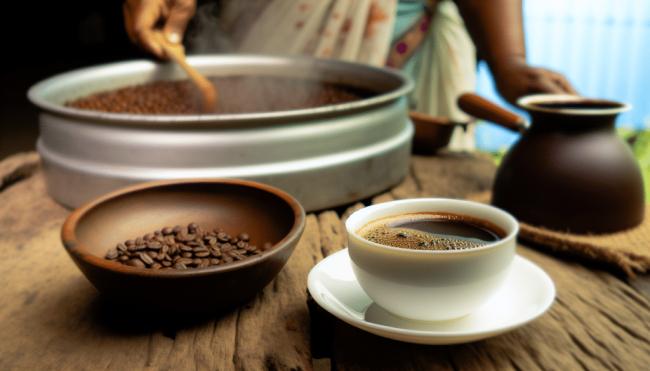
Specialty coffee offers a realm of flavors, showcasing the dedication and passion of coffee professionals across the globe. It’s characterized by:
- A commitment to quality
- Careful coffee selection of specialty coffee beans
- Artisanal brewing techniques that transform green coffee into a cup of delicious coffee.
The growing interest of coffee drinkers reflects this commitment, as they seek to understand the origins, production methods, and unique flavors of specialty coffee.
Defining Specialty Grade
What sets specialty coffee apart is its superior grade. Specialty grade coffee is distinct in its flavor, free of defects and taints. It’s evaluated on multiple criteria, including:
- Size
- Density
- Color
- Shape
- Lack of primary defects, such as full black beans or sour beans
Certified professionals, known as Q graders, assess these beans, scoring them on a 100-point scale.
To be termed as ‘specialty’, a coffee must score above 80.
The Journey from Bean to Cup
The journey of specialty coffee from bean to cup highlights the industry’s unwavering commitment to quality throughout the entire value chain. It starts with sustainable farming practices where the choice of genetic cultivars impacts the coffee’s profile. The cultivation process is also influenced by:
- elevation, with higher altitudes often leading to denser beans and deeper flavors
- climate, which affects the coffee’s acidity and sweetness
- soil composition, which can add unique flavors and characteristics to the coffee
Artisanal roasting is a crucial phase in this journey where roasters use precise methods to highlight the distinct taste notes of each coffee variety.
The Role of the Specialty Coffee Association
The Specialty Coffee Association (SCA) forms a global network of coffee professionals dedicated to uplifting the specialty coffee industry. The SCA fosters sustainability and ensures that advances in coffee science and sensory analysis benefit all parties in the coffee supply chain.
In addition, the SCA organizes events such as the world coffee championships, which showcase the skills and expertise of coffee professionals from around the globe.
By providing educational programs, certifications, and resources like the SCA Flavor Wheel, the association plays a pivotal role in research and standard-setting within the specialty coffee sector.
Frequently Asked Questions
Q: Is organic coffee ethically sourced?
A: Organic certification alone doesn’t guarantee the rights of workers or set a minimum price.
Q: What does it mean to be ethically sourced?
A: Ethical Sourcing is the process of ensuring that the products made are obtained through responsible and sustainable methods.
Q: Is Fair Trade really ethical?
A: Critics argue that Fairtrade, but not all other Fair Trade businesses, harm all non-Fairtrade farmers.Fairtrade claims that its farmers are paid higher prices and are given special advice on better techniques, both of which will lead to increased output being sold on the global market.
Q: Are Specialty Coffee Roasters Ethical?
A: Specialty coffee roasters are all about paying a generous price for high quality coffee, grown in the best conditions, by people who are treated fairly.Farmers growing high quality coffee will almost always be operating ethically.
FAQ
What is specialty coffee?
Specialty coffee consists of beans of the highest grade, which have been approached with particular care at all stages of production: on the farm and during processing, transportation, and roasting.
Thanks to this approach, the coffee will have clear flavors and an outstanding taste.
Only single-origin Arabica beans that score 80 or more points on the SCAA scalecan be recognized as specialty coffee.
What makes specialty coffee so special?
What makes it special is the approach to production, which is based on ethical principles, high quality and the desire to improve the coffee community.
With this approach, you can enjoy a variety of flavors depending on country of cultivation, processing methods, and roasting profiles.
What’s the difference between specialty coffee and commercial coffee?
Only single-origin Arabica beans become specialty coffee.
Commercial coffee uses both lower-grade Arabica beans and Robusta beans, and sometimes creates blends.
How do you prepare specialty coffee?
Specialty beans’ flavors are best revealed when using alternative brewing methods: AeroPress, pour-over, or cold brew.
Grinding the beans just before brewing and using the correct dosage will help you enjoy a delicious cup of specialty coffee.
Where can you buy specialty coffee?
You can buy it at specialized coffee shops, from local roasters, or online from roasters’ websites.
How can you keep specialty coffee fresh longer?
Buy freshly roasted whole beans and grind just before brewing.
Don’t buy coffee in large packages—only buy the amount you can use in a few weeks.
Store your coffee beans in sealed containers in a dry, dark place.
What is the Specialty Coffee Association?
The SCA is a non-profit trade organization that emerged from the merger of the American and European Specialty Coffee Associations.
The goal of the association is to develop the global coffee community.
It works to make specialty coffee prosperous and fair for everyone involved in production.
Why is specialty coffee so expensive?
Because its production costs are higher than those of commercial coffee.
When you buy specialty coffee, you pay for the highest-quality product that’s shade-grown high above sea level, hand-harvested at a specific time, processed and roasted correctly, and brewed well.
Is all specialty coffee organic?
No—specialty coffee packaging does not indicate specific farming methods.
But it can be organic if grown by traditional methods without the use of chemicals and pesticides.
A USDA Organic label indicates that the coffee is cultivated with the environment in mind.
Industry standards vs cultural differences
The specialty coffee industry is often defined by benchmarks set by countries like Norway, Japan, Denmark, Australia, South Korea, and New Zealand. With specialty coffee becoming more popular the world over, however, it’s clear that definitions can change according to where you are.
For example, in North America and certain Asian countries, some consumers prefer medium (or even darker) roast profiles.
“Some people want the traditional ‘strong’ coffee taste because it’s what they are used to,” Joanne says.
As one of the ten-largest importing countries in the world, roasters in Japan tend to roast slightly darker. Traditional Japanese coffee shops (or kissatens) also favour filter coffee over espresso.
“There are a lot of specialty coffee shops in the US,” Patrick tells me. “But many people still choose to add milk and sweeteners in their coffees.”
Ultimately, this means that while specialty coffee marketing and branding strategies largely appear to be the same around the world, cultural differences still influence consumer behaviour.
At the same time, however, the SCA’s standards and protocols also impact how we define specialty coffee. Updated earlier this year to mitigate the “intersubjectivity” of cupping, these processes are used to grade and assess the quality of green coffee.
“Objective scoring is necessary and important to the specialty coffee sector,” Joanne explains. “It helps to communicate quality to both roasters and producers, as well as consumers.”
With that said, it can be difficult to contextualise industry standards within different specialty coffee cultures around the world.
One of the most prominent examples is criticism of the SCA Coffee Taster’s Flavor Wheel. This resource is largely geared towards Western palates. In turn, local coffee professionals in countries like Taiwan and Indonesia have started to develop their own resources.
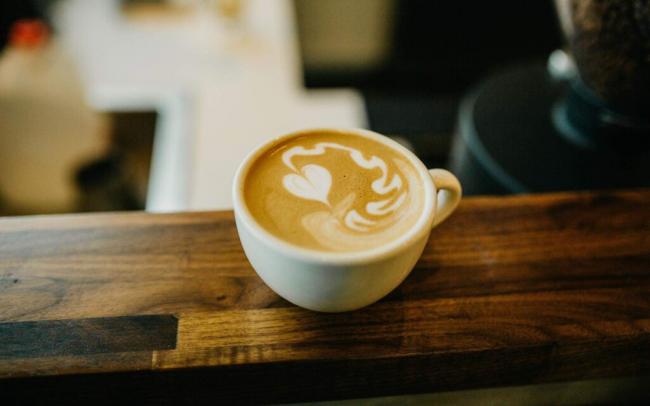
How is speciality coffee classified?
So, as we’ve said, speciality coffee must achieve at least 80 on the speciality scale, marked by a certified coffee taster, approved by the Speciality Coffee Association. The coffee is given either a ‘very good’, ‘excellent’ or ‘outstanding’ rating with its official score.
There are many steps to the classification and everyone involved in the process must adhere to the strict rules, if the coffee is to be speciality. This means coffee farmers, green coffee buyers, coffee roasters and baristas must all be aligned during the process, otherwise it simply won’t be a speciality coffee.
The classification process
The rating process for speciality coffee is very strict. In fact, there are elements considered that you wouldn’t have even thought about! For example, during the assessment, the lighting levels in the room must be the same for each classification, as well as the size of the table. This standardisation ensures that each fledgling bean gets a fair trial!
For the coffee beans themselves, there are defect categories they must pass. To become a speciality coffee bean, there must be no Category 1 defects. A defect in this category can include issues like a black or sour bean, which can greatly affect the taste. The coffee bean must also have no more than 5 Category 2 defects. These defects include immature, damaged, cracked or even discoloured beans.
If the bean survives all of this, then it’s officially a speciality coffee bean!
Where is specialty coffee most popular?
Despite its smaller market share, it’s undeniable that the global specialty coffee sector is growing. But by far the most obvious growth is in the US, Europe, and Asia-Pacific.
Let’s look at the US first. In 2022, research from the National Coffee Association found that domestic consumption of coffee had reached a 20-year high. At the same time, 43% of surveyed consumers reported drinking a specialty coffee beverage in the past day. This represents a 20% increase on January 2021.
Moreover, some figures predict that the North American specialty coffee market will grow by 20% year-on-year until 2030. This would make it the fastest-growing market in the world.
According to Research and Markets, the Asia-Pacific specialty coffee sector will experience a 15.3% annual growth rate from now until 2030. The research agency also found that premiumisation is a significant driver of this growth.
Europe, meanwhile, is one of the world’s most important consuming markets. The continent currently has the largest share of the global specialty coffee market at around 46.2%. Its market growth is expected to increase by 9% over the next three years, too.
Breaking down regional specialty coffee consumption
Although it’s one of the most important markets, considering there are dozens of culturally-different countries in Europe, the popularity of specialty coffee in this region is incredibly difficult to generalise.
Scandinavia is a global pioneer of specialty coffee culture, for example. Thanks to leading industry professionals in countries like Norway, Denmark, Sweden, and Finland in the late 1990s and early 2000s, light roast single origin coffee has become popular in more and more countries around the world.
What’s more, year after year, Nordic countries often top lists for the highest coffee consumption per capita. With more than an estimated 80 roasteries in a country of around 5.4 million people, it’s evident that specialty coffee is a prevalent part of Norwegian culture.
Joanne Berry is the Head of Procurement for green specialty coffee trader Tropiq in Oslo, Norway.
“I think there are very few places in the world that drink coffee like Norwegians,” she says. “Of course, Norwegians drink coffee in different ways, but the majority of them prepare coffee at home.
“At any kind of family or social event, Norwegians always serve brewed coffee – and people drink it black,” she adds. “In Norway, it’s so normal to drink black coffee, which means you can taste more of the coffee’s inherent characteristics.”
What about in producing countries?
For the most part, when compared to consuming countries, specialty coffee consumption is overall lower in producing countries. This is the result of the historical structure of the global coffee trade, as well as the fact that most marketing takes place in consuming countries.
However, in recent years, domestic coffee consumption has been growing in a number of key producing countries. Some examples include:
- Between 2016 and 2018, Brazil’s specialty coffee market share doubled from 6% to 12%. This is sure to have increased in the years since, especially following Boram Um’s 2023 World Barista Championship win
- In 2018, the estimated value of the Colombian specialty coffee market was around US $1.52 billion. This is also likely to have increased over the past five years – including after Diego Campos was crowned the first-ever Colombian World Barista Champion in 2021
- According to the International Coffee Organisation, domestic consumption in Uganda rose by 2.4% between 2018 and 2021
Patrick O’Malley is the founder of the International Barista and Coffee Academy in the US. He explains throughout his travels to Latin America over the years, he has noticed that specialty coffee culture has become more prevalent in the region.
“Now, if you go to countries like Honduras, Colombia, Brazil, Mexico, you will find more and more high-end specialty coffee shops,” he tells me.
Fabrizio Sención is the owner of PalReal in Guadalajara, Mexico. He also co-founded 5PM – Guadalajara’s first specialty coffee shop – in 2004, and is a 2015 World Barista Championship finalist.
He explains how roasters at origin are changing their buying practices to accommodate for increasing demand for specialty coffee.
“Previously, all the highest-scoring coffees grown in Mexico were earmarked for export,” he says. “But now, more locally-grown coffees are purchased domestically.”
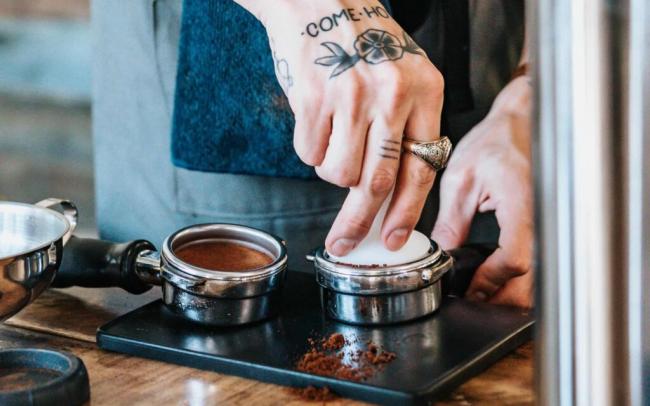
Где растет спешелти кофе
Кофе растёт не везде — только в определённых странах и регионах с благоприятным климатом. На территории “кофейного пояса”, линии экватора +/- 10 километров, сосредоточены фермы и плантации, которые обеспечивают зерном весь мир.Потенциал кофейного зерна закладывается при его созревании и зависит от:
- высоты произрастания деревьев,
- кислотности почвы,
- обилия солнечного света и осадков.
Измените одну переменную, и новый урожай будет существенно отличаться от предыдущего. Поэтому нельзя присвоить класс спешиалти конкретному производителю или сорту, каждую партию оценивают отдельно. Сегодня на плантации собирают чемпионов, завтра — обычный коммерческий продукт.
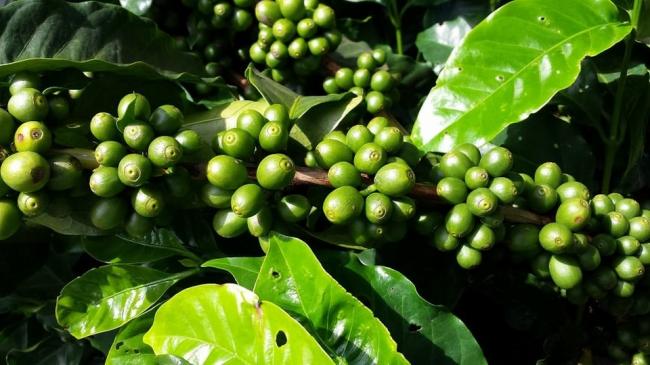
Вообще кофейная ягода — уникальное растение. Его ценят не за мякоть, а за зерно. На вкус кофейная ягода горькая, вяжущая и совершенно невкусная. Но она всё равно играет большую роль в подготовке кофейного напитка.
Путешествие спешелти кофейных зерен от дерева до чашки
Процесс производства спешелти кофе включает в себя ряд этапов, которые требуют тщательного внимания к деталям и контроля качества. Ниже приводится краткий обзор пути кофейных зерен от дерева до чашки.
Выращивание и сбор урожая
Спешелти кофе обычно производится из зерен арабики, которые выращиваются в высокогорных регионах с умеренными температурами, хорошим качеством почвы и достаточным количеством осадков.
Кофейным деревьям требуется несколько лет, чтобы созреть и начать давать плоды, которые известны как кофейные вишни.
Спелость вишен очень важна для качества, поэтому их обычно собирают вручную, когда они полностью созрели.
Обработка
После того как кофейная ягода собрана, ее необходимо обработать, чтобы удалить внешние слои и открыть зерна внутри. Существует два основных метода обработки кофе: влажный и сухой. При мокром методе ягоды моют и отделяют зерна от мякоти плода, а при сухом методе ягоды сушат, сохраняя плоды нетронутыми, а зерна удаляют позже.
Сортировка и классификация
После обработки кофейных зерен их необходимо отсортировать и разделить по размеру, форме, цвету и дефектам. Зерна специального кофе обычно сортируются и сортируются несколько раз, чтобы обеспечить однородность и качество. Высший сорт специального кофе известен как «строго твердое зерно» (SHB), который выращивается на высоте более 1200 метров над уровнем моря и имеет плотную, однородную структуру.
Обжарка
После сортировки и сортировки кофейных зерен они готовы к обжарке. Обжарка – важный этап в процессе производства кофе, поскольку она раскрывает вкус и аромат зерен. Специальные кофейные зерна обычно обжариваются небольшими партиями, чтобы обеспечить постоянство и качество. Процесс обжарки может варьироваться в зависимости от желаемого вкусового профиля, но обычно включает в себя нагревание зерен до высоких температур и тщательный контроль за ними для достижения желаемой степени обжарки.
Заваривание
Наконец, обжаренные кофейные зерна готовы к приготовлению вкусного кофе. Существует множество различных методов заваривания специального кофе, в том числе заварной, френч-пресс, эспрессо и другие. Для каждого метода требуется различное оборудование и техника, но все они подразумевают извлечение вкуса и аромата кофейных зерен в горячую воду для создания вкусного и ароматного напитка.
В целом, путь специальных кофейных зерен от дерева до чашки – это сложный и многоступенчатый процесс, требующий пристального внимания к деталям и контроля качества на каждом этапе. Понимая и оценивая путь своего кофе, потребители могут глубже понять уникальные вкусы и ароматы, которые делают особый кофе таким богатым и полезным.
There are two kinds of specialty coffee:
Single-origin
Single-origin coffee is that which comes from just one country. While most blends have beans originating from, at the very least, two different countries, single-origin blends consist only of coffee beans grown in a single country. This gives the coffee a very authentic, original taste. Single-origin blends consist of different beans grown in different parts of the country, and there’s no limit to the different varieties that these blends can include.
Single-origin is not only superior in terms of quality, but it also helps certain communities thrive. If single-origin coffee weren’t a thing, it would be easy for single companies to hold a monopoly over their country’s coffee production, and exports. But because of the appeal of single-origin, different beans from different growers are valuable. It’s not just about price and quality, but also about variety and different flavors. Just like there isn’t a right and wrong answer in philosophy, there isn’t a better or worse bean in specialty coffee; only different.
This allows for small communities, like Bolivian indigenous people, to keep on selling coffee despite their lack of infrastructure and, therefore, higher costs.
Single Estate
When you want to get even more specific than single-origin, you choose beans from a single estate. These beans are grown in close proximity, under the same climatic conditions. The beans are usually of a very high quality and are given very special care during growing. Single estate coffee doesn’t only mean quality, but also a very distinct taste that is almost impossible to find in other types of coffee. Single estate coffee -that tastes good- is very hard to provide unless you’ve been in the game for a long time. Typically, only estates with 50 or more years of coffee-growing experience provide this type of coffee.
No other coffee is as hard to come by like this one. Some estates closely guard their beans, to the point of being incredibly hard to find certain varieties except for one place. This is the case with Geisha coffee beans, mentioned earlier— the most expensive coffee bean in the world. There is currently one estate in the world that produces it, and you can be sure that they intend to keep it that way.
Почему его называют спешиалти кофе?
Спешиэлти кофе существует уже давно, в той или иной форме. Мы склонны считать спешиэлти кофе новой тенденцией, но даже в начале 1900-х взыскательные покупатели в Париже указывали, что кофе будет закупаться отдельными микропартиями с определенных ферм в определенных регионах Гватемалы.
Термин «спешелти кофе» впервые был использован в 1970-х годах в Журнал торговли чаем и кофе, всего через несколько лет после открытия первого магазина Starbucks. Благодаря таким магазинам, как Starbucks и Peet’s, кофе превратился из современного удобства в напиток. С тех пор усовершенствования в сельском хозяйстве, технологиях обжарки и пивоварения, а также повышенный спрос на высококачественный кофе сделали спешиалти кофе в руках любителей кофе во всем мире.
Зеленый кофе классифицируется путем визуального осмотра и дегустации. Визуальный осмотр включает в себя отбор 350-граммового образца зеленых кофейных зерен и подсчет дефектных зерен. Дефекты могут быть первичными (например, черные или горькие бобы) или вторичными (лопнувшие бобы). Чтобы кофе считался «специальным», он должен иметь ноль первичных дефектов и менее пяти вторичных дефектов.
Каппинг включает в себя обжарку кофе и приготовление его просто с помощью горячей воды и зависит от способности каппера присваивать баллы каждому из атрибутов кофе, таким как кислотность, тело, вкус и аромат.
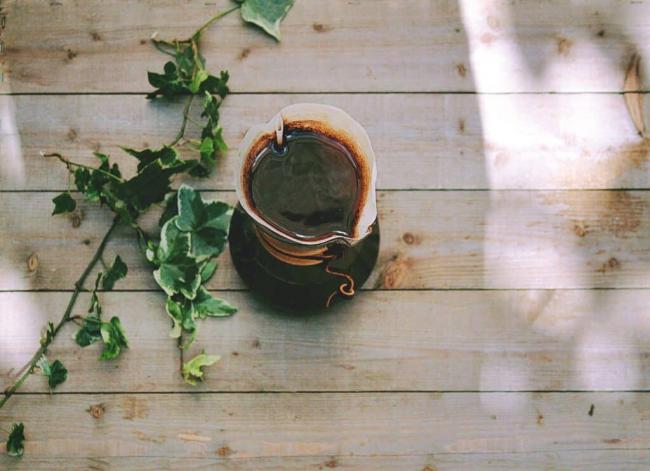
Кто первым предложил использовать термин Specialty coffee
Впервые термин specialty coffee применила Эрна Натсен (Erna Knutsen, 1921–2018 гг.) в журнале «Tea & Coffee Trade Journal» в 1978 году. Она использовала его для обозначения кофейного зерна, выращенного в особом микроклимате, обладающим уникальными вкусо-ароматическими характеристиками. Так она стала основателем отрасли specialty кофе, за что получила награду SCAA «За прижизненные достижения» в 1991.

В 1982 году в США группа ценителей кофе основала организацию «Specialty Coffee Association of America» (SCAA). Specialty в вольном переводе с английского — “особенный”, ведь только особенное, выдающееся зерно получает высокую оценку.
Социальная ответственность в спешелти кофе
Индустрия спешелти кофе построена на фундаменте этичного выбора поставщиков и социальной ответственности. От справедливой оплаты труда фермеров до устойчивых методов ведения сельского хозяйства и инициатив по развитию местных сообществ – спешелти кофе является движущей силой позитивных изменений во всем мире.
Одним из ключевых элементов социальной ответственности в спешелти кофе является концепция прямой торговли
Прямая торговля – это модель поиска поставщиков кофе, в которой особое внимание уделяется отношениям между фермерами и обжарщиками с акцентом на прозрачность, справедливость и долгосрочную устойчивость. Такой подход позволяет фермерам получать более высокие цены за свой кофе, что, в свою очередь, поддерживает экономическое развитие их сообществ
Еще один важный аспект социальной ответственности в спешелти кофе – экологическая устойчивость. Многие компании, производящие спешелти кофе, отдают предпочтение устойчивым методам ведения сельского хозяйства, например, выращиванию кофе в тени, что помогает сохранить биоразнообразие и сократить вырубку лесов. Кроме того, компании, занимающиеся обжаркой кофе, часто отдают предпочтение экологически ответственной практике в своей деятельности, например, использованию возобновляемых источников энергии и сокращению отходов.
Социальная ответственность в спешелти кофе также распространяется на инициативы по развитию местных сообществ. Многие компании инвестируют в сообщества, где выращивается кофе, поддерживая проекты в области образования, здравоохранения и инфраструктуры. Эти инициативы помогают строить сильные и устойчивые сообщества, которые, в свою очередь, поддерживают долгосрочную устойчивость кофейной индустрии.
Уделяя приоритетное внимание социальной ответственности во всех аспектах своей деятельности, специализированные кофейные компании работают над созданием более устойчивой и справедливой кофейной индустрии, от которой выигрывают все – от фермеров до потребителей
Meet the Innovators: Top Specialty Coffee Roasters
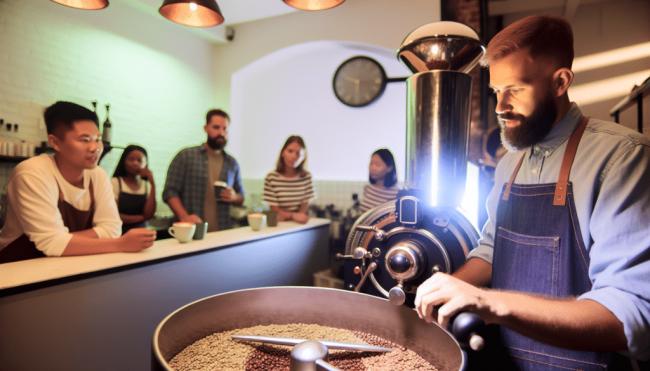
The top specialty coffee roasters have been recognized for their:
- Innovation
- Commitment to sustainability
- Award-winning products
- Unique stories
These roasters are at the forefront of the specialty coffee industry, pushing the limits of quality and taste with their amazing coffee, ensuring a great coffee experience.
Roasters Championing Sustainability
Some roasters, such as Noble Coyote Coffee Roasters and Alma Coffee, center their philosophy on ethical trade and sustainability. These roasters engage in direct trade with farmers, fostering better quality control and fair compensation.
They set high standards for social and environmental accountability, contributing to a more balanced and fair specialty coffee industry.
Award-Winning Roasters
Several roasters, including Verve Coffee Roasters, JBC Coffee Roasters, and PT’s Coffee, have been recognized with Roast Magazine’s Roaster of the Year Award and other accolades for their exceptional quality and innovation.
These roasters offer a testament to the excellence and passion fostered in the specialty coffee industry.
Roasters with a Story
The specialty coffee industry is filled with roasters with unique stories to tell. Roasters like Firebean Coffee Roasters, DRINK COFFEE DO STUFF, and Kalve Coffee Roasters showcase their unique approaches to roasting, commitment to community, and dedication to environmental and social responsibilities.
Where to Find Specialty Coffees Online
You might wonder where to find these amazing specialty coffees. Fortunately, the world of specialty coffee is easily accessible online. Online retailers, subscription services, and direct sales from roasters allow coffee enthusiasts to experience a wide range of specialty coffees from the comfort of their homes.
Online Retailers with a Reputation for Quality
Online retailers with a reputation for quality, like Trade Coffee and Craft Coffee, offer a personalized shopping experience similar to what you might find at local coffee shops.
They provide a wide variety of specialty coffees and tailor deliveries to customer taste preferences, ensuring you get the perfect coffee to suit your palate. By purchasing coffee online, you can enjoy the convenience and variety these retailers offer.
Subscriptions for Coffee Lovers
Subscription services such as MistoBox, Driftaway Coffee, and Go Get Em Tiger provide a month-to-month journey through top coffee selections. These services are a convenient way to explore a diverse array of hand-picked specialty coffees right to your doorstep.
Direct from the Roaster
Buying directly from roasters’ websites ensures customers receive the freshest coffee possible.
Companies like Blue Bottle Coffee, Verve Coffee Roasters, and Vivid Coffee Roasters offer a variety of freshly roasted coffee, including popular blends and single-origin coffees, available for purchase daily through their online stores.
Аукционы спешелти кофе
Специализированные кофейные аукционы являются важной частью специализированной кофейной индустрии и предоставляют фермерам платформу для демонстрации и продажи своих кофейных зерен высочайшего качества покупателям по всему миру. Эти аукционы обычно проводятся такими организациями, как Alliance for Coffee Excellence, которая занимается продвижением и развитием производства и продажи кофе специальных сортов
На кофейном аукционе фермеры представляют свои лучшие кофейные зерна для оценки и выставления на торги покупателями со всего мира. Кофейные зерна обычно оцениваются группой экспертов-судей, которые используют строгую систему баллов для оценки качества и вкуса зерен. Затем зерна продаются тому, кто предложит наибольшую цену, часто по ценам, значительно превышающим рыночные цены на товарный кофе.
Кофейные аукционы дают фермерам возможность получить более высокую цену за свои высококачественные кофейные зерна, а также способствовать распространению устойчивой и этичной практики производства кофе. Демонстрируя уникальный вкус и качество своих кофейных зерен, фермеры могут привлечь покупателей, готовых платить премию за кофе особого сорта, что, в свою очередь, поможет поддержать устойчивую и ответственную практику производства кофе.
Кроме того, специализированные кофейные аукционы помогают повышать прозрачность и отслеживаемость кофейной индустрии. Обеспечивая прямую связь между фермерами и покупателями кофе, аукционы помогают гарантировать, что фермеры получают справедливые цены за свой кофе, а покупатели имеют возможность приобретать высококачественные, устойчиво произведенные кофейные зерна.
В целом, специализированные кофейные аукционы являются важной частью специализированной кофейной индустрии и играют важную роль в продвижении устойчивости, прозрачности и практики производства кофе высочайшего качества
Как растят Speciality кофе
«Спешиалти» кофе обычно собирают с определенных плантаций, где не используются химические удобрения или механизированные способы обработки. Чаще всего это фамильные фермы, владельцы которых веками растят деревья и собирают урожай, обрабатывая его определенным способом.
Зрелые красные кофейные вишни собирают исключительно вручную, сортируя на каждом этапе. Всего один испорченный боб может придать излишнюю кислоту или плесневый вкус всей партии.
На равнинных территориях гораздо больше площадь для посадок, что делает их идеальными для кофе товарного уровня, но эти зерна, как правило, более горькие, в результате резкого воздействия солнца во время их созревания. Их легко собирать механизированным путем. Специальный кофе растет на высокогорье, в ограниченном пространстве, и за счет особого воздействия солнца созревает неравномерно, медленно, но получает особый вкус и насыщенный аромат.
Наиболее крупные регионы выращивания Specialty Coffee расположены высоко на холмах стран Центральной Америки и Африки.
Для начала выбирайте кофе по средней цене
Самый дорогой напиток, который я пробовала, — это кофе разновидности гейша из Панамы. Его стоимость около 200 долларов за килограмм. Это было в 2016 году, но я помню тот кофе до сих пор. В букете чувствовались кокос, ананас, карибский тёмный ром, белый виноград, клубника, маракуйя, цветочные ноты и тростниковый сахар. Тактильно напиток был очень шелковистый.
Какие зёрна можно присмотреть новичкам:
- Бразилия Кристаис Паулиста
- Эфиопия Соломон Гету
- Уганда Сипи Фоллз
- Эфиопия Ненсебо Вореда
Для расширения вкусового опыта:
- Колумбия Люси Сапата
- Кения Кириньяга
- Коста-Рика Мора
- Колумбия Ла Прадера
Для необычного вкусового опыта:
- Сальвадор Вилла Испанья
- Эфиопия Боша Дукамо
- Панама Гейша Камбера
- Колумбия Диего Самуэль Бермудес
